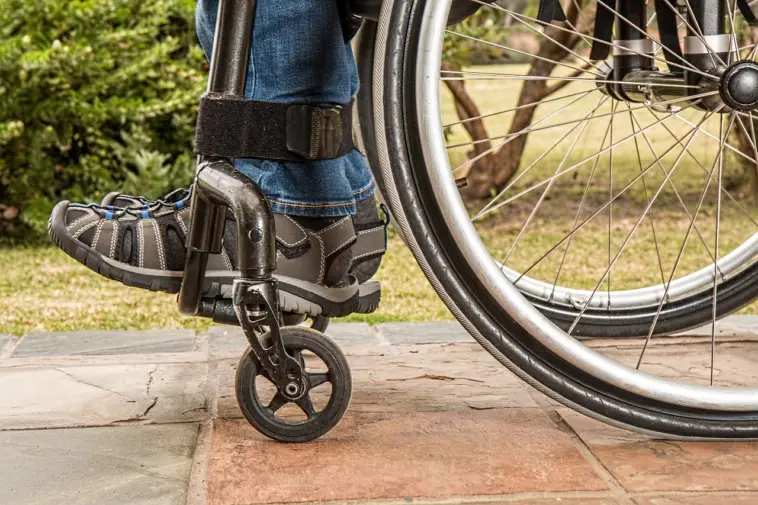You’ve pushed your body, faced the challenges, and inevitably, suffered an injury. Now, you’re left navigating the unfamiliar path to recovery. This journey, while sometimes daunting, is a crucial part of regaining your strength and returning to the activities you love. This blog post is going to explore seven essential steps to effective injury recovery — providing you with a roadmap to optimal health. Let’s dive in.
Consult with a Healthcare Professional
The first step in the injury recovery process is consulting with a healthcare professional. Their expert knowledge and diagnostic tools are critical in assessing the extent of your injury and formulating a comprehensive recovery plan. A healthcare professional can identify the type of injury, whether it’s a strain, sprain, fracture, or something more severe. They will then prescribe suitable therapeutic procedures, medications, and even surgical interventions, if necessary.

Furthermore, they can provide guidance on physical therapy exercises, nutrition, and lifestyle changes, significantly impacting your recovery speed and effectiveness. Regular check-ups allow them to monitor your progress and adjust the recovery plan as needed. Another benefit is the proof of injuries that came due to someone else’s negligence. Big Apple residents are always explained by their New York personal injury lawyer why medical records are essential in winning a case and help you reimburse for your medical bills. By adhering to their advice, you can ensure a safer, smoother, and more efficient healing process, reducing the risk of further complications or injuries.
Rest and Protect
Rest and protection are pivotal to injury recovery. When your body is at rest, it channels more resources to the injured area, expediting healing. The rest phase allows the body to clear out debris, reduce inflammation, and begin tissue repair. Protection, on the other hand, minimizes the risk of further damage. This can mean using protective gear, avoiding specific movements, or modifying activities that could risk re-injury.
It’s crucial to remember that while rest is beneficial, prolonged inactivity can result in stiffness and muscle atrophy. Thus, a balanced approach incorporating rest, protection, and gentle movement under professional supervision is recommended. This approach ensures optimal recovery while mitigating potential risks.
Follow a Rehabilitation Program
A rehab program is carefully devised and personalized so patients can effectively exercise the injured area without risking re-injury. Physical therapy is often part of this program, and it aims to improve flexibility, strength, and balance, and reduce pain. Here are the essential steps it contains:
- Assessment and evaluation
- Setting goals
- Pain management
- Rest
- Range of motion exercises
- Range of motion exercises
- Strength training
- Cardiovascular conditioning
- Functional exercises
- Coordination and balance training
- Sport-specific training
- Sport-specific training
- Education and home exercise program
- Monitoring and adjustments
A rehabilitation program is vital for injury recovery as it aids in restoring strength, flexibility, and mobility, all of which are affected after an injury. It is designed to help the body recover at a steady pace, gradually reintroducing movement and exercise to the injured area.
The program also focuses on pain management and prevention of future injuries. Guided by a professional, it ensures a safe and effective recovery path, helping individuals return to their daily activities and improving their overall quality of life.
Manage Pain and Inflammation
This step involves employing strategies such as medication, ice therapy, and elevation that help reduce swelling and alleviate pain. By effectively managing pain and inflammation, your body can focus on the healing process rather than being in a constant state of distress. This not only enhances the healing speed but also improves comfort during recovery.
Moreover, by reducing inflammation, the risk of additional damage to tissues and joints is minimized. On the other hand, proper pain management can improve mobility, enabling more effective participation in physical therapy. This tandem of decreased inflammation and pain results in a more efficient and comfortable recovery process, allowing you to return swiftly to everyday activities.
Maintain a Healthy Diet
Eating balanced meals filled with proteins, vitamins, and minerals can significantly accelerate healing. Proteins aid in tissue repair and building new tissue, while vitamins such as C and A, along with zinc, play a pivotal role in wound healing and strengthening the immune system. Carbohydrates provide the energy required for these processes. Hydrating adequately is equally essential, promoting nutrient absorption and enhancing cell functions necessary for healing.
Foods rich in omega-3 fatty acids, such as fish and walnuts, can help manage inflammation. Conversely, reducing intake of processed foods, sugars, and excessive fats can prevent inflammation and improve overall health. In essence, a well-rounded, nutrient-dense diet can bolster your body’s recovery capabilities, leading to a quicker and more effective injury recovery.
Gradual Return to Activity
Primarily, this process protects the body from the shock of sudden intense exercises, thus preventing re-injury or exacerbation of the existing condition. By slowly reintroducing physical activity, muscles, tendons, and ligaments can adapt and rebuild their strength and flexibility. It also allows the body time to heal completely before being subjected to strenuous movements.
Moreover, gradual reintroduction fosters psychological readiness, helping individuals overcome apprehension about moving the injured part. A sudden return to activity, in contrast, can be both physically and mentally overwhelming. Therefore, a phased approach that respects the body’s healing timeline is instrumental in ensuring a safe and effective recovery.
Address Mental Well-being
Stress, anxiety, and depression can delay healing by diverting the body’s energy resources, impeding the recovery process. Mental wellness practices, such as mindfulness, meditation, and positive visualization, can foster a growth mindset, resilience, and optimism. These elements can effectively reduce pain perception, enhance coping strategies, and motivate adherence to physical therapy routines, significantly accelerating recovery.
Furthermore, addressing mental health aids in overcoming fears associated with re-injury, encouraging a confident return to normal activities. For example, if someone suffered an injury while playing a sport, addressing mental well-being can help them overcome the fear of returning to that activity by focusing on positive outcomes and developing coping mechanisms. Ultimately, nurturing mental well-being results in a more holistic approach to recovery, promoting overall health and well-being.

In conclusion, remember that recovery from an injury is a multifaceted journey that involves not just physical healing, but also mental and emotional resilience. By taking a balanced approach to rest, rehabilitation, nutrition, and mental wellness, you can navigate this path with confidence. Remember, the journey to recovery is not a sprint, but a marathon. Your strength, patience, and commitment are your greatest allies in this journey back to optimal health.




